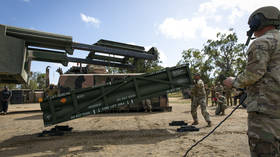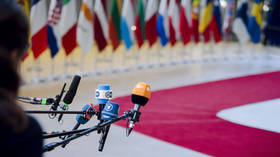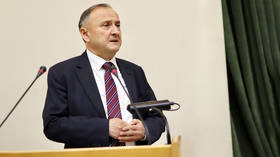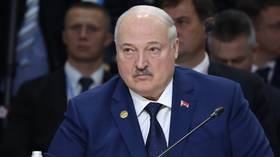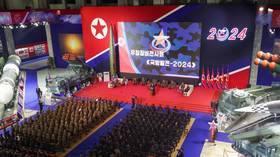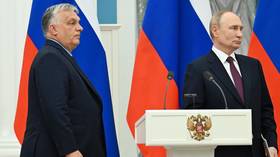Moscow mourns terrorist siege victims
The official ceremony at the square outside the Dubrovka theatre, held to mourn the victims of the 2002 Moscow theatre siege, has come to an end. In memory of the tragedy one minute's silence was held, 130 white balloons were released into the sky.
Nevertheless, people are expected to turn up throughout the day to mourn the victims of the tragedy.
On October 26, 2002 Special Forces stormed the theatre where more than 900 people, who'd come to watch the musical Nord Ost, had been held hostage for three days.
The lives of one hundred and thirty hostages were lost.
Nord-Ost was Russia's first homemade big-budget musical. It was being performed to a full house on October 23, 2002, when masked gunmen invaded the stage midsong.
Female suicide bombers surrounded the crowd. They said it would take them a fraction of a second to set off a chain of explosions that would kill the entire audience and cast. They demanded that Russia immediately withdraw its forces from Chechnya.
As police surrounded the theatre, three days of negotiations followed.
The terrorists forced the hostages to use the orchestra pit instead of a toilet. Many suffered from dehydration or illness and several were shot.
The authorities were unwilling to give in to the terrorists' demands and, 57 hours after the beginning of the siege, at 6 am on October 26, an operation to release the hostages began.
Instead of just storming the building special forces employed a previously unused secret gas.
It knocked out both the suicide bombers and hostages alike, giving the would-be bombers no chance to detonate their explosives. After a short gunfight, in which no policemen died, the operation was complete.
It appeared to be a stunning victory – but it was too early to celebrate.
Almost all of the 1000 hostages were alive after all the terrorists had been killed. But 130 died shortly afterwards from asphyxiation – including those that choked on their own vomit – either in the courtyard outside the theatre or on their way to hospital.
There were ten children among the victims, and 69 more children were orphaned by the siege. Many of the survivors have suffered long term effects from the gas applied.
A plaque at the site of the tragedy commemorates those who died.
Some of the people dissatisfied with the way the operation was conducted formed an organisation called ‘Nord Ost’ and published a book called ‘An Unfinished Investigation’.


